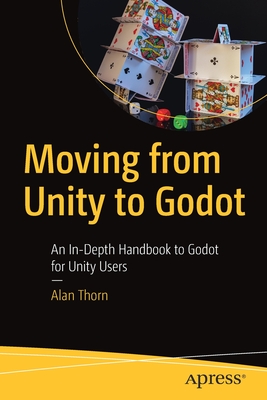Modeling Life: The Mathematics of Biological Systems
暫譯: 生命建模:生物系統的數學
Alan Garfinkel, Jane Shevtsov, Yina Guo
- 出版商: Springer
- 出版日期: 2017-10-02
- 售價: $2,660
- 貴賓價: 9.5 折 $2,527
- 語言: 英文
- 頁數: 445
- 裝訂: Hardcover
- ISBN: 3319597302
- ISBN-13: 9783319597300
海外代購書籍(需單獨結帳)
買這商品的人也買了...
-
 Introducing Character Animation with Blender
Introducing Character Animation with Blender$1,620$1,539 -
 $875Analysis of Biological Networks (Hardcover)
$875Analysis of Biological Networks (Hardcover) -
 Biological Modeling and Simulation: A Survey of Practical Models, Algorithms, and Numerical Methods (Hardcover)
Biological Modeling and Simulation: A Survey of Practical Models, Algorithms, and Numerical Methods (Hardcover)$2,350$2,233 -
 新世紀多媒體導論:理論與應用
新世紀多媒體導論:理論與應用$600$570 -
 現代多媒體實務與應用
現代多媒體實務與應用$650$585 -
數學建模 : 使用 Matlab
$290$284 -
 初探機器學習|使用 Python (Thoughtful Machine Learning with Python)
初探機器學習|使用 Python (Thoughtful Machine Learning with Python)$480$379 -
 A Primer on Scientific Programming with Python (Texts in Computational Science and Engineering)
A Primer on Scientific Programming with Python (Texts in Computational Science and Engineering)$2,540$2,413 -
 $1,715Numerical Python: Scientific Computing and Data Science Applications with Numpy, SciPy and Matplotlib Second Edition
$1,715Numerical Python: Scientific Computing and Data Science Applications with Numpy, SciPy and Matplotlib Second Edition -
 2019.2020 系統重灌、調校、故障排除與資料搶救自己來 (超值附贈314分鐘影音講解)
2019.2020 系統重灌、調校、故障排除與資料搶救自己來 (超值附贈314分鐘影音講解)$450$356 -
 Excel 入門到完整學習 邁向最強職場應用—王者歸來 (全彩印刷)
Excel 入門到完整學習 邁向最強職場應用—王者歸來 (全彩印刷)$680$537 -
 深度學習的數學地圖 -- 用 Python 實作神經網路的數學模型 (附數學快查學習地圖)
深度學習的數學地圖 -- 用 Python 實作神經網路的數學模型 (附數學快查學習地圖)$580$458 -
 決心打底!Python 深度學習基礎養成
決心打底!Python 深度學習基礎養成$690$587 -
 AI 醫療 DEEP MEDICINE (Deep Medicine: How Artificial Intelligence Can Make Healthcare Human Again)
AI 醫療 DEEP MEDICINE (Deep Medicine: How Artificial Intelligence Can Make Healthcare Human Again)$680$578 -
 AI for Immunology
AI for Immunology$1,400$1,330 -
 超 Easy!Blender 3D 繪圖設計速成包 - 含 3D列印技巧 - 最新版(第二版)
超 Easy!Blender 3D 繪圖設計速成包 - 含 3D列印技巧 - 最新版(第二版)$380$342 -
 速查! 數學大百科事典 – 127 個公式、定理、 法則
速查! 數學大百科事典 – 127 個公式、定理、 法則$500$425 -
 Biology: A Global Approach, 12/e (Paperback)
Biology: A Global Approach, 12/e (Paperback)$2,100$2,058 -
 打下最紮實 AI 基礎不依賴套件:手刻機器學習神經網路穩健前進
打下最紮實 AI 基礎不依賴套件:手刻機器學習神經網路穩健前進$1,200$948 -
 Python 論文數據統計分析
Python 論文數據統計分析$540$486 -
 Python 程式設計 ─ AI 與資料科學應用, 2/e
Python 程式設計 ─ AI 與資料科學應用, 2/e$540$529 -
 人手一本的資安健診實作課:不是專家也能自己動手做!(Win10 / Win11適用)
人手一本的資安健診實作課:不是專家也能自己動手做!(Win10 / Win11適用)$560$437 -
 資料科學基礎數學 (Essential Math for Data Science)
資料科學基礎數學 (Essential Math for Data Science)$680$537 -
 未來數位科技活用大全:從 AI 協作、程式設計、資訊安全到大數據分析
未來數位科技活用大全:從 AI 協作、程式設計、資訊安全到大數據分析$580$452 -
 Biology Made Easy
Biology Made Easy$840$798
相關主題
商品描述
This book develops the mathematical tools essential for students in the life sciences to describe interacting systems and predict their behavior. From predator-prey populations in an ecosystem, to hormone regulation within the body, the natural world abounds in dynamical systems that affect us profoundly. Complex feedback relations and counter-intuitive responses are common in nature; this book develops the quantitative skills needed to explore these interactions.
Differential equations are the natural mathematical tool for quantifying change, and are the driving force throughout this book. The use of Euler’s method makes nonlinear examples tractable and accessible to a broad spectrum of early-stage undergraduates, thus providing a practical alternative to the procedural approach of a traditional Calculus curriculum. Tools are developed within numerous, relevant examples, with an emphasis on the construction, evaluation, and interpretation of mathematical models throughout. Encountering these concepts in context, students learn not only quantitative techniques, but how to bridge between biological and mathematical ways of thinking.
Examples range broadly, exploring the dynamics of neurons and the immune system, through to population dynamics and the Google PageRank algorithm. Each scenario relies only on an interest in the natural world; no biological expertise is assumed of student or instructor. Building on a single prerequisite of Precalculus, the book suits a two-quarter sequence for first or second year undergraduates, and meets the mathematical requirements of medical school entry. The later material provides opportunities for more advanced students in both mathematics and life sciences to revisit theoretical knowledge in a rich, real-world framework. In all cases, the focus is clear: how does the math help us understand the science?
商品描述(中文翻譯)
這本書發展了生命科學學生描述互動系統和預測其行為所需的數學工具。從生態系統中的捕食者-獵物族群,到體內的荷爾蒙調節,自然界充滿了深刻影響我們的動態系統。複雜的反饋關係和反直覺的反應在自然界中很常見;這本書發展了探索這些互動所需的定量技能。
微分方程是量化變化的自然數學工具,並且是本書的主要驅動力。使用歐拉法(Euler’s method)使非線性範例變得可處理且對廣泛的初學者可及,從而提供了一種實用的替代方案,取代傳統微積分課程的程序性方法。書中在眾多相關範例中發展工具,強調數學模型的構建、評估和解釋。在具體情境中接觸這些概念,學生不僅學習定量技術,還學會如何在生物學和數學思維之間架起橋樑。
範例範圍廣泛,探索神經元和免疫系統的動態,直到族群動態和 Google PageRank 演算法。每個情境僅依賴於對自然界的興趣;不假設學生或講師具備生物學專業知識。本書以預備課程(Precalculus)為唯一前提,適合一年級或二年級本科生的兩學期課程,並滿足醫學院入學的數學要求。後面的材料為數學和生命科學的高年級學生提供了在豐富的現實框架中重新審視理論知識的機會。在所有情況下,重點都很明確:數學如何幫助我們理解科學?
































